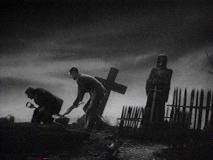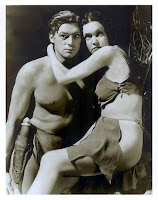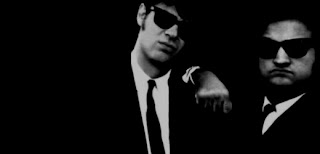
Domestication was a Paleolithic sign that humans had moved beyond mere subsistence and had not only the incentive but the leisure (if I can use that word for those alternately dusty and mud-caked ages) to develop all kinds of everyday human stuff, from tools to artworks, as well as language and perhaps the beginning of a "spiritual life." The first domestic animal appears to be the dog--and not, like goats and pigs, primarily for food (although that use seems likely), but as a working partner--and, as most pet-owners would agree, a companion. So the idea of a "pet" is as old as flint blades and cave paintings.
Like our forebears--and most everyone--I've had my share of pets: two dogs in childhood--Spike the Collie/mutt, Georgie the terrier/mutt--as well as my sister's Siamese, Ch-Chi (my mother's childhood nickname), and of course various birds and fish, and a late encounter with gerbils. As an adult we've had a cat, Boo-Boo (named after Shirley Feeney's stuffed cat), two dogs--Patty the mutt and currently Frank the Pug--plus, largely due to children, sundry birds and fish and rodents, as well as a few baby rabbits plucked from the yard and kept for a while in the house, serving as characters in a low-key Disneyesque short of gentle mishaps and cutie-pie antics.
I sometimes profess unconcern, even disdain, for our pets, a curmudgeonly frown worn as a counterpoint to the kiss-kiss hug-hug fuss made over wee beasties. But I know--from Georgie and Chi-Chi, even Boo-Boo (taken in when we were first married)--the power of pet ownership, especially as one begins something--adolescence, adulthood, the Stone Age--in other words, that larger act of moving outside of one's immediate needs and recognizing something outside of oneself, even one's species, and accepting a bond that we manufactured millennia ago with, it appears, mutant wolves--both of us, then, unlike others of our kind, setting off together in unequal gait--sometimes one stepping ahead, sometimes the other--along the valley floor, hunter's knife and artist's charcoal both at hand.
 Sunday
Sunday
My Dog Skip (2000)Almost any dog movie--even this Friday's selection--can threaten sentimentality. The mere sight of a child--especially if he is uncertain, alone, or frail--holding a clear-eyed canine seems the whole story itself, with no need for detail. But
My Dog Skip, as often as it picks up that broad maudlin brush, knows how to position the boy--played pitch-perfectly by Frankie Muniz--and his dog so that they stand between the boy's fears and the other side, whatever that may hold. And those fears are not ill-founded: His protective father (Kevin Bacon) had lost his leg in the Spanish Civil War, and the hometown baseball hero (Luke Wilson) returns in shame from World War II. And maybe it's too easy to go on about a small thing in a ruthless world--not to mention the film's veering toward
Tom Sawyer-like or "social consciousness" subplots; and Skip is phenomenal, gregarious and decisive to such an extent that it sometimes seems his owner simply tags along--but the movie refuses to let us forget that the simple kid-and-pooch bond is potent because it is so simple. And the joy we are allowed to feel in their idealized relationship is tempered by the inevitabilities of human years vs. dog years, and how they intersect in love first, then sorrow, then memory.
Monday
The Yearling (1946)I saw this on TV when I was a kid, and what I remember most--aside from the absolute prettiness of the yearling--was the look on Claude Jarman Jr.'s face. His Jody seems ready to grow up, but the imperatives of farm life, his dependence on his parents and the safety of the homestead impose a permanent slightly wounded look on his face--even when he smiles--OK, beams--at the deer. Gregory Peck previews his later fatherliness in
To Kill a Mockingbird (1962), but his Ezra Baxter has less time to see the bigger picture--although both fathers feel almost helpless in the face of required killing, glimpses into the prehistoric beginnings of this story, the pretty deer and the oiled gun necessary in the same movie.
 Tuesday
Tuesday
The Story of the Weeping Camel (2004)This "narrative documentary"* concerns a Mongolian family's troubles with a camel that refuses to nurse her new calf. In his review, Roger Ebert acknowledges it is "reasonable" to mention the camels' names--Ingen Temee the mother and her white calf Botok--"since they are so much a part of their nomad families." Something large looms here: a view of the earliest human relationships with domesticated animals. Yes, the camels are a vital resource, and the family's concerns make sense as they consider the loss. But their anxiety is not merely proprietary; as they send for a musician to play the music that should urge the mother to nurse--and which should move her to tears--we know that they are not merely concerned about goods, but another mother in their midst, another child. As the camel weeps, so do some of the people watching tear up, just a little, just enough to reassure us that we are also allowed to be moved. The film has given us a beautiful landscape--and more, a loving family to witness, and to emulate if we can. In their bond with their animals, they do not turn away from each other. They are simply in the same family, and their love awakens with the cries of an infant.
Wednesday
Duma (2004)I just finished teaching for "College for Kids," a two-week program at Knox College. One of my students in "How to Watch a Movie" suggested we screen
Duma in response to my need for a movie that would display all the elements of film we had been talking about--camera placement and movement, shot length and sequence, lighting, sound, and so on. While I had something more "adult" in mind (but nothing above PG), I wanted to reward her participation, so we watched most of it over a period of two days. And while
Duma was "well-made," in that it had the budget to pay attention to the possibilities of sight and sound, I was most struck by the image of the white South African boy with his orphaned cheetah. The animal's face is beautiful but a bit distant, a perfected cat's face: round-eyed--a little surprised anyone's looking--but still composed, confident in its lean, zero-to-sixty-in-three-seconds hyper-ventilated frame. At the same time it seems fragile, as much as the boy who hangs on to it. Often, it's difficult to tell who's protecting whom. Together, they often seem out of place--at boarding school, in a motorcycle sidecar, on the desert plain. The only thing that makes the image comfortable is the subjects themselves, trusting each other, cheek-to-cheek in a landscape that, either out of malice or love, tries to thwart them. This is the first of two Carroll Ballard films this week; the other is
The Black Stallion. But a number of his films (such as
Fly Away Home/1996 and
Never Cry Wolf/1983) would suffice, if only because he recognizes that the purest setting for human-animal stories is the wilderness, the sky, even the paddock--any place the animal belongs. In his movies, humans meet them more than halfway, setting a bond that merits our respect.
 Thursday
Thursday
Best in Show (2000)Sometimes, though, all respect is lost, all around, between humans and their pets. While Christopher Guest, Eugene Levy and friends tend to expose (with sometimes cruel glee) their subjects' frailties--
Waiting for Guffman (1996) makes me wince perhaps more than any of their films--a certain (albeit often merely residual) affection remains, something Guest learned playing Nigel Tufnel, "going to eleven." And so, as cringingly awful are the dog-show people in
Best in Show, we never discard them. And while we may not care for them much--if we did, how could we laugh?--we see that they understand pet ownership as much as any less self-consumed dog-lover, at least in some cases, particularly Guest's hound-lover, Harlan Pepper, the jowly fellow who "used to be able to name every nut that there was." There's a joke in there, but it's too easy. I'd rather watch this movie's telling combination of dog-love and self-love, the first suffering for the second, while the dogs somehow seem above it all, our better halves.
 Friday
Friday
A Boy and His Dog (1975)And what happens when this human-dog bond is all that remains? Depend on that little madman of speculative fiction, Harlan Ellison, to provide a vision dangerous enough to contemplate a reverse
Old Yeller, in which, to be as blunt as the movie, it sure isn't the dog who's put down. This is a black comedy that manages to be deeply humorless, intent on adolescent apocalypse and the fine-tuned effect of a sledgehammer as instrument of social commentary. It loves its ugliness, its sardonic dismemberment of the square world, its petulant refusal to let anything live beyond the capabilities of one's teeth. And it is, of course, compelling. A fresh-faced Don Johnson and his telepathic dog maneuver their way through this revenge fantasy with our complete attention, almost innocent in their direct appreciation of how crappy everything is, and the necessities generated by accepting the carnivore's code: Eat, don't be eaten. If one must suffer a nuclear Holocaust, this film argues, at least one should bring along a trusted pet--in this case, Blood (voiced by Tim McIntire), smarter than his owner and quicker on the draw. The always-contentious Ellison gives in not an inch--until he admits the secret strength shared by a boy and his dog--even as he upends it to serve his nasty, riveting ends.
Saturday
The Black Stallion (1979)Remove the tattered cities, the subterranean mutant suburbia, and all that uneasy eating, and
A Boy and His Dog gets close to
The Black Stallion--although the latter most certainly decides on, to understate the case, a less scarifying version of mutual protection and sacrifice. One of those children's movies that refuses to pander, its depiction of the partnership between Alec (Kelly Reno) and The Black informs us we have entered a kind of fable, beautiful, dark and full. And the friendly troll/wise wizard is no less than Mickey Rooney, whose Henry, the wise trainer, is nothing but Puck as a father. Visually, director Carroll Ballard stresses the horse's shining darkness in chiaroscuro counterpoint to the often-dazzling terrain Alec and The Black course along. As stirring as another late-'70s crowd-pleaser,
Rocky (1976),
The Black Stallion joins Stallone's film in understanding that competition is most ennobling as an internalized thing--and adds the connection that stretches way back, when men and horses barely knew one another, but somehow figured in each others' dreams, like those all-but-hidden cave paintings--food at first, naturally, then slowly in tandem.

*I suppose it would be insulting to call it a "staged documentary," although that is more apt. Like Robert Flaherty's
Nanook of the north (1922),
Weeping Camel uses real people in their own environment to tell a story typical of their culture. And if Flaherty's film is considered the birth of the documentary, then
Weeping Camel should be proud to stage its narrative; after all, whenever we look back at our lives we do the same, form stories, and replace those with the events themselves. It is the simple process of memory, as good a system as we have, and movies like
Weeping Camel flourish in the act of recreating reality as immediate filmed memory.

 Darren Aronofsky's The Fountain (2006) is easy to dismiss--J. Hoberman is particularly snarky-eloquent:
Darren Aronofsky's The Fountain (2006) is easy to dismiss--J. Hoberman is particularly snarky-eloquent: There is a moment--noticed, as I checked, by other internetters--lifted shot-by-shot from Akira Kurosawa's Ikiru (1952). His morose bureaucrat (Takashi Shimura) has just found out he has stomach cancer. He walks along a silent city street, past a construction site--a shower of sparks fly--and into the street, where he is almost run over by a truck--and at that moment the sounds of the world crash out, like a switch thrown. In The Fountain it is Tom walking from the hospital and his cancer-victim wife (Rachel Weisz), and the scene is repeated in every detail. Aronofsky, then, makes a film about immortality and necessary death that itself has a long life, stretching along the--yes, lachrymose--trail left by movies that share its concerns. And so comparisons with 2001: A Space Odyssey are inevitable--and in some ways unfortunate--but not entirely inaccurate nor off-putting. I have also recently watched once more Steven Soderbergh's 2002 remake of Andrei Tarkovsky's Solaris (1972), another movie that approaches both Aronofsky and Kubrick--which in turn hearken to any number of experimental, non-narrative films made in the decades before.
There is a moment--noticed, as I checked, by other internetters--lifted shot-by-shot from Akira Kurosawa's Ikiru (1952). His morose bureaucrat (Takashi Shimura) has just found out he has stomach cancer. He walks along a silent city street, past a construction site--a shower of sparks fly--and into the street, where he is almost run over by a truck--and at that moment the sounds of the world crash out, like a switch thrown. In The Fountain it is Tom walking from the hospital and his cancer-victim wife (Rachel Weisz), and the scene is repeated in every detail. Aronofsky, then, makes a film about immortality and necessary death that itself has a long life, stretching along the--yes, lachrymose--trail left by movies that share its concerns. And so comparisons with 2001: A Space Odyssey are inevitable--and in some ways unfortunate--but not entirely inaccurate nor off-putting. I have also recently watched once more Steven Soderbergh's 2002 remake of Andrei Tarkovsky's Solaris (1972), another movie that approaches both Aronofsky and Kubrick--which in turn hearken to any number of experimental, non-narrative films made in the decades before.  So for me the first step toward accepting The Fountain was in its own willingness to become a part of the long march through oft-repeated themes and visual tropes. Beyond that, however, are its graphic novel sensibilities, eager to cut from scene to scene, the sheer experience of sequence equaling "narrative": first we see this, then that, then the next--and we make connections, many of them visual. This film works for the viewer only if each scene does; and the scenes themselves make sense only in their relationship to the one that precedes and the one that follows. The particulars of character and plot fell away for me--I was satisfied with the mere repetition of certain lines ("Finish it," "Together we will live forever," and, most anticipatory, "Death is the road to awe") and images.
So for me the first step toward accepting The Fountain was in its own willingness to become a part of the long march through oft-repeated themes and visual tropes. Beyond that, however, are its graphic novel sensibilities, eager to cut from scene to scene, the sheer experience of sequence equaling "narrative": first we see this, then that, then the next--and we make connections, many of them visual. This film works for the viewer only if each scene does; and the scenes themselves make sense only in their relationship to the one that precedes and the one that follows. The particulars of character and plot fell away for me--I was satisfied with the mere repetition of certain lines ("Finish it," "Together we will live forever," and, most anticipatory, "Death is the road to awe") and images. And it is mostly in the images that this film compels us to supply meaning, from the Tree itself, to the various incarnations of Jackman's character, to Rachel Weisz's face. And the road to the city, the interior of the nebula, the lights in houses and labs, all move in each major sequence (past, present, future) to imply an arc that moves very simply--from doubt to faith, from anger to acceptance. To step among such archetypal goings-on, one must abandon all malice. Admittedly, this is a supremely self-indulgent film; but, I confess, so are most of my favorites, from Nosferatu (1922) and Citizen Kane (1941) to Eraserhead (1977) and Bringing Out the Dead (1999), as well as the films of Guy Maddin and the Brothers Quay and Jan Svankmejer, and the silent collages of Joseph Cornell. Together such filmmakers play (to steal a Maddin title) the saddest music in the world--and also ask us to forgive each other--and the filmmakers, of course--for loving such self-indulgence, all of us guilty in our pleasures, but rewarded. Aronofsky made an ambitious collage, one fraught with the perils of its own extravagance, but in the end as beautiful as a starlit night--speaking of which, one more lengthy quotation, a curative to Hoberman, another bit of beautiful excess and sky-gazing reconciliation, this one from G. M. Hopkins:
And it is mostly in the images that this film compels us to supply meaning, from the Tree itself, to the various incarnations of Jackman's character, to Rachel Weisz's face. And the road to the city, the interior of the nebula, the lights in houses and labs, all move in each major sequence (past, present, future) to imply an arc that moves very simply--from doubt to faith, from anger to acceptance. To step among such archetypal goings-on, one must abandon all malice. Admittedly, this is a supremely self-indulgent film; but, I confess, so are most of my favorites, from Nosferatu (1922) and Citizen Kane (1941) to Eraserhead (1977) and Bringing Out the Dead (1999), as well as the films of Guy Maddin and the Brothers Quay and Jan Svankmejer, and the silent collages of Joseph Cornell. Together such filmmakers play (to steal a Maddin title) the saddest music in the world--and also ask us to forgive each other--and the filmmakers, of course--for loving such self-indulgence, all of us guilty in our pleasures, but rewarded. Aronofsky made an ambitious collage, one fraught with the perils of its own extravagance, but in the end as beautiful as a starlit night--speaking of which, one more lengthy quotation, a curative to Hoberman, another bit of beautiful excess and sky-gazing reconciliation, this one from G. M. Hopkins:





























